The Best Places to Live in Spain: A Guide for US Expats
If you’re planning a move to Spain from the US, you’re in for an exciting adventure filled with rich culture, diverse landscapes, and a more relaxed way of life. However, deciding where to live in Spain can be a challenge. Whether you want vibrant city life, quiet coastal views, or historic charm, Spain offers something for everyone. In this guide, we’ll explore the best places to live in Spain, including seasonal weather patterns and the unique local cultures and traditions that give each region its charm.
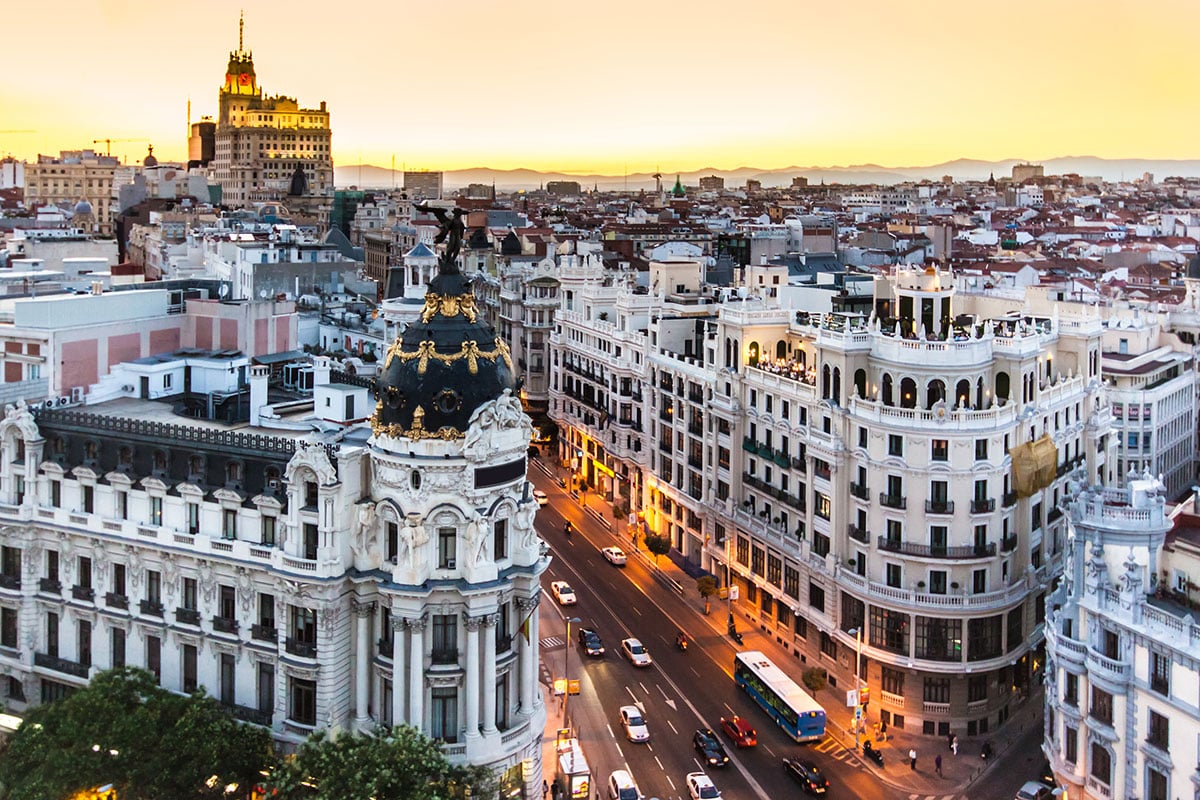
Madrid: Spain’s Dynamic Capital
As the capital of Spain, Madrid is a bustling metropolis with a rich history and a vibrant modern culture. It’s a top choice for expats looking for a blend of professional opportunities, entertainment, and cultural experiences. With its world-class museums, parks like El Retiro, and a buzzing nightlife, Madrid appeals to both families and young professionals.
Why Live in Madrid?
- Thriving job market, especially for those in finance, IT, and education
- Excellent public transportation and connectivity to the rest of Europe
- A diverse expat community, making it easier to adjust
- Some of the best international schools for families moving with children
Cultural Highlights in Madrid: Madrid is home to some of Spain’s most iconic festivals and traditions. The San Isidro Festival, held in May, honors the city’s patron saint with parades, bullfights, and concerts. During La Paloma Festival in August, the streets of Madrid’s oldest neighborhood come alive with traditional music, dancing, and processions. Madrid also hosts one of the biggest New Year’s Eve celebrations at Puerta del Sol, where thousands gather to eat 12 grapes at midnight for good luck.
Weather in Madrid:
- Spring (March-May): Mild and pleasant, with temperatures ranging from 50°F to 70°F. Perfect for outdoor activities and exploring the city’s parks.
- Summer (June-August): Hot and dry, with temperatures often reaching 90°F or more. Many locals leave for cooler destinations.
- Fall (September-November): Comfortable with cooler temperatures, ranging from 50°F to 70°F, and a great time to enjoy cultural festivals.
- Winter (December-February): Cold but not extreme, with temperatures averaging 30°F to 50°F. Occasional snow, but generally dry.
Best for: Professionals, families, and those who want a cosmopolitan lifestyle.
Learn More About Moving to Madrid

Barcelona: A Creative Coastal Hub
Barcelona, located in Catalonia, is one of Spain’s most iconic cities. With stunning architecture by Antoni Gaudí, beautiful beaches, and a lively arts scene, it’s a haven for creatives and entrepreneurs. It’s also known for its high quality of life, which attracts expats from all over the world.
Why Live in Barcelona?
- A strong economy, particularly in tech, design, and tourism industries
- The Mediterranean climate makes it perfect for outdoor activities year-round
- Bilingual opportunities (Spanish and Catalan), with many international schools
- A vibrant food and cultural scene with endless events and festivals
Cultural Highlights in Barcelona: Barcelona is renowned for its artistic heritage and its many festivals that celebrate both Catalan and Spanish traditions. One of the city’s most famous festivals is La Mercè, celebrated in September with parades, human towers (castells), fireworks, and concerts across the city. Sant Jordi’s Day, celebrated on April 23rd, is the Catalan version of Valentine’s Day, where couples exchange books and roses. The city also boasts a thriving arts scene, with world-class galleries, theaters, and live music venues.
Weather in Barcelona:
- Spring (March-May): Mild and sunny, with temperatures around 55°F to 70°F. Ideal for beach visits and sightseeing.
- Summer (June-August): Warm and humid, with highs reaching 85°F. Perfect for enjoying Barcelona’s beaches and outdoor events.
- Fall (September-November): Pleasant and slightly cooler, with temperatures ranging from 55°F to 75°F.
- Winter (December-February): Mild, with temperatures rarely dropping below 45°F. Occasional rain but generally comfortable.
Best for: Creatives, entrepreneurs, and anyone seeking a balance between work and coastal relaxation.
Learn More About Moving to Barcelona
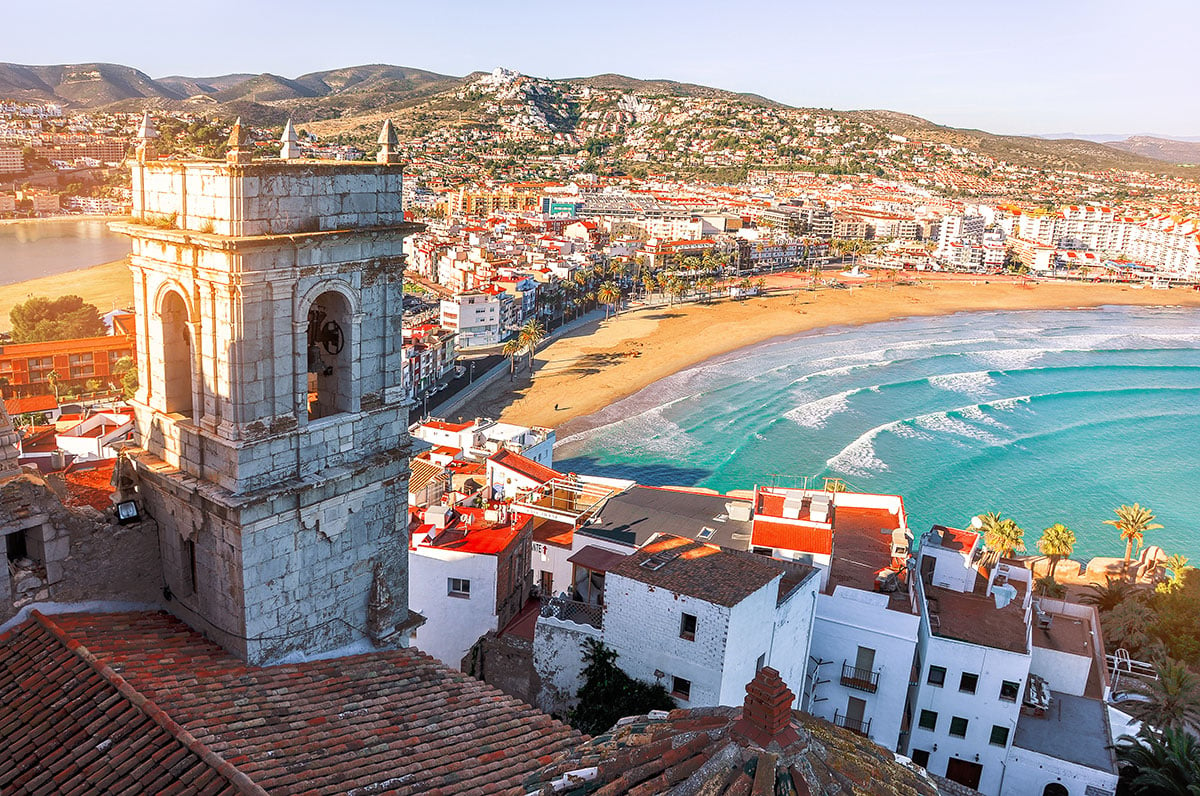
Valencia: Coastal Living with Urban Charm
Valencia is Spain’s third-largest city and offers an affordable yet high-quality lifestyle. It’s less crowded than Madrid or Barcelona but still has all the amenities of a major city. Famous for its futuristic architecture and the annual Las Fallas festival, Valencia is also known for its long stretches of beach and fantastic paella.
Why Live in Valencia?
- Lower cost of living compared to other major Spanish cities
- A great mix of urban life and beach access
- Growing expat community and a laid-back lifestyle
- Excellent health care and public transportation systems
Cultural Highlights in Valencia: Valencia is famous for Las Fallas, a massive festival held in March, where the city explodes with art, fireworks, and fire. Intricate sculptures called fallas are built throughout the city, only to be set ablaze in a dramatic spectacle at the festival’s end. Another important tradition is the Tomatina in nearby Buñol, a famous tomato-throwing festival in August. Valencia is also known for its Holy Week processions and its long-standing connection to the famous dish paella, which originated in this region.
Weather in Valencia:
- Spring (March-May): Pleasant and sunny, with temperatures between 55°F and 75°F. The perfect time for festivals and exploring the city.
- Summer (June-August): Hot and sunny, with highs around 90°F. Ideal for beach lovers, though it can get quite hot in the afternoons.
- Fall (September-November): Still warm, with temperatures between 60°F and 80°F. Occasional rain showers.
- Winter (December-February): Mild, with temperatures ranging from 45°F to 60°F. A quieter time in the city with fewer tourists.
Best for: Those seeking affordability without sacrificing quality of life.

Seville: Spain’s Historic and Cultural Gem
For a taste of authentic Spain, Seville is a top pick. Located in Andalusia, it’s a city rich in history, flamenco, and tapas. The slower pace of life in Seville appeals to expats who want to experience traditional Spanish culture. Its warm climate and beautiful architecture, including the Alcázar and Plaza de España, make it a visual delight.
Why Live in Seville?
- Affordable housing and lower overall living costs
- A strong sense of community and deep cultural heritage
- The warm climate makes outdoor living enjoyable year-round
- Excellent public transport system and proximity to nature
Cultural Highlights in Seville: Seville is the heart of Andalusian culture, and its traditions run deep. The city is famous for Semana Santa (Holy Week), one of Spain’s most important religious celebrations, featuring elaborate processions with floats and religious imagery. In April, Seville hosts the Feria de Abril, a week-long fair filled with flamenco dancing, traditional dress, food, and music. Flamenco itself, with its passionate rhythms and soulful singing, originated here, and many venues offer intimate performances. Bullfighting remains an important part of Seville’s culture, with one of the oldest and most famous bullrings, La Maestranza.
Weather in Seville:
- Spring (March-May): Warm and beautiful, with temperatures ranging from 55°F to 80°F. This is one of the best times to experience Seville’s outdoor life.
- Summer (June-August): Extremely hot, often exceeding 100°F, with most locals taking siestas during the hottest part of the day.
- Fall (September-November): Warm and comfortable, with temperatures ranging from 60°F to 80°F.
- Winter (December-February): Mild, with temperatures between 40°F and 60°F. Rarely cold, but it can be damp during this season.
Best for: Culture lovers, retirees, and anyone seeking a slower-paced lifestyle.
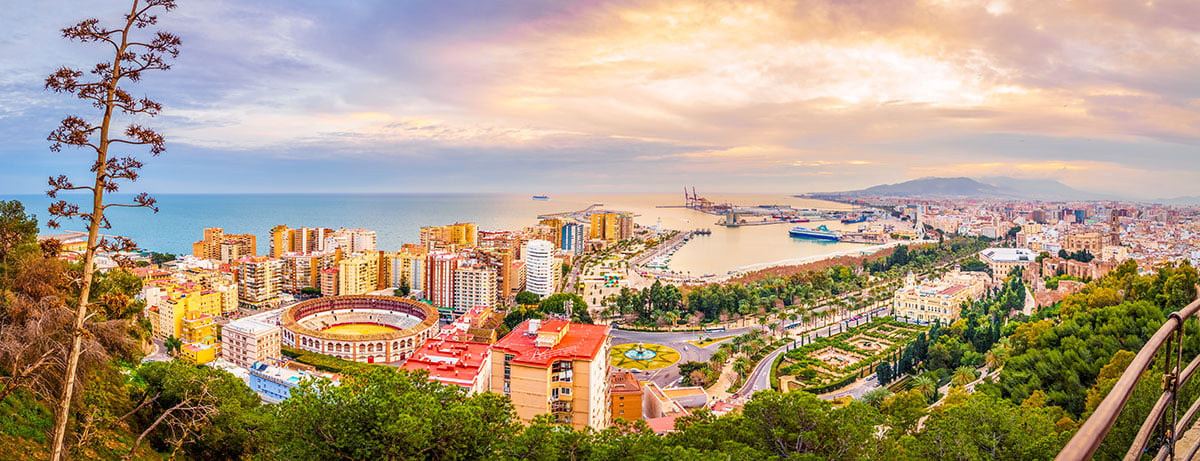
Málaga: The Gateway to the Costa del Sol
Málaga, on the southern coast, is a popular destination for expats seeking sun, sea, and a relaxed lifestyle. Known for its historic landmarks and as the birthplace of Picasso, Málaga has a growing tech industry and a fantastic food scene. It also serves as a gateway to the famous Costa del Sol, a stretch of coastline dotted with picturesque beach towns.
Why Live in Málaga?
- Mild climate with over 300 days of sunshine annually
- Booming tourism and tech sectors
- Lower cost of living compared to northern Spain
- Easy access to nearby beach towns and international airports
Cultural Highlights in Málaga: Málaga’s Holy Week processions are some of the most famous in Spain, attracting thousands of visitors each year. The city also celebrates Feria de Málaga, a week-long festival in August with music, dancing, and street performances, showcasing the best of Andalusian culture. As the birthplace of Pablo Picasso, Málaga is a hub for art lovers, with the Picasso Museum offering a deep dive into the artist’s work and legacy. The city is also known for flamenco, and you’ll find plenty of venues offering live performances of this passionate dance.
Weather in Málaga:
- Spring (March-May): Warm and sunny, with temperatures ranging from 60°F to 75°F.
- Summer (June-August): Hot and dry, with temperatures often exceeding 90°F. Perfect for beachgoers.
- Fall (September-November): Warm, with temperatures between 65°F and 80°F, and fewer tourists.
- Winter (December-February): Mild, with temperatures around 50°F to 65°F. Ideal for those looking to escape colder climates.
Best for: Retirees, remote workers, and beach lovers.
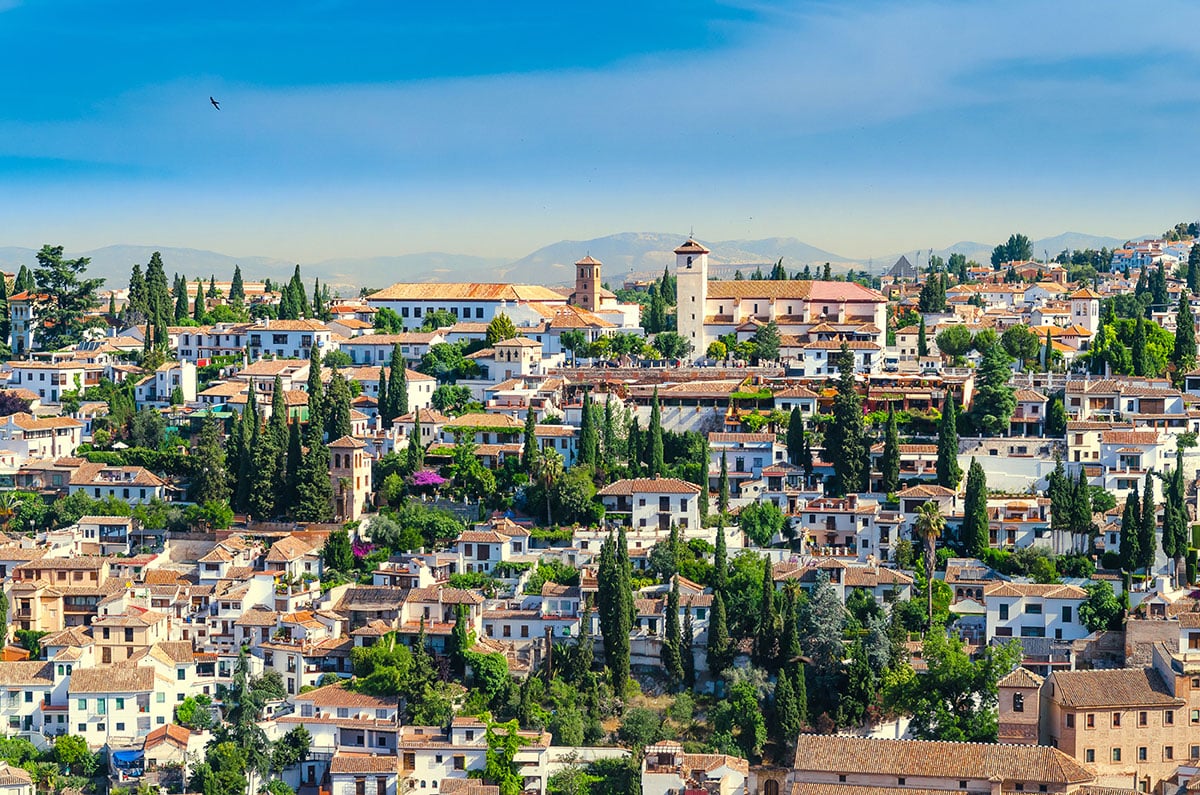
Granada: Mountain Views and Moorish Architecture
For those who love both nature and history, Granada offers a unique combination. Nestled at the foot of the Sierra Nevada mountains, it’s a small city that feels much larger due to its historic landmarks, like the Alhambra. Granada is perfect for outdoor enthusiasts and history buffs who want a peaceful yet enriching lifestyle.
Why Live in Granada?
- Proximity to mountains for skiing and hiking
- Rich Moorish history and stunning architecture
- Low cost of living with affordable housing
- A smaller expat community but a close-knit one
Cultural Highlights in Granada: Granada is steeped in Moorish history, and this influence is evident throughout the city. The Alhambra Palace, a UNESCO World Heritage site, is one of Spain’s most famous landmarks and a symbol of Moorish architecture. Granada celebrates its unique history with the Día de la Toma every January, commemorating the day the city was reclaimed from the Moors. Flamenco also thrives in Granada, particularly in the Sacromonte neighborhood, where cave houses host intimate performances. Granada’s Holy Week is another major cultural event, with beautiful processions that fill the narrow streets of the old town.
Weather in Granada:
- Spring (March-May): Pleasant with temperatures ranging from 55°F to 75°F, making it ideal for hiking and exploring the city’s history.
- Summer (June-August): Hot, with temperatures often exceeding 95°F, though evenings tend to be cooler.
- Fall (September-November): Comfortable, with temperatures ranging from 55°F to 75°F.
- Winter (December-February): Cold, especially at night, with temperatures ranging from 30°F to 50°F. The nearby mountains often get snow, making it a prime spot for winter sports.
Best for: Nature lovers, history enthusiasts, and those seeking a quieter lifestyle.
Which Spanish City is Right for You?
Each of Spain’s cities offers a distinct lifestyle and climate, so your choice will depend on what kind of life you’re looking to create. Whether you’re drawn to the fast-paced excitement of Madrid, the artistic vibes of Barcelona, or the sunny beaches of Málaga, Spain has something for everyone.
If you’re ready to start living in Spain, our international moving services to Spain can make your transition seamless. We offer comprehensive support from packing to shipping, ensuring you settle into your new home with ease.
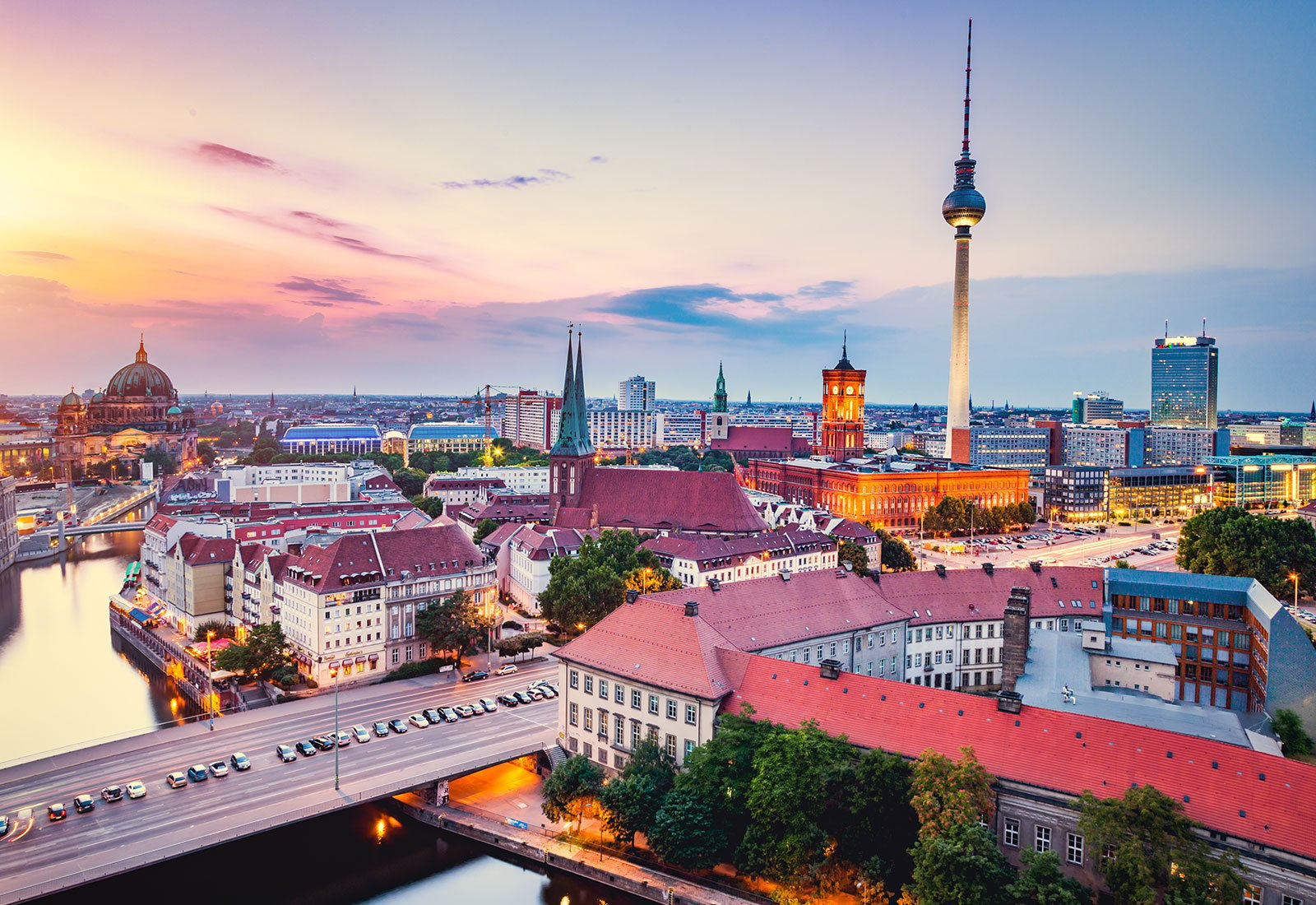
Are you considering a move to Germany? Moving to a new country is a thrilling adventure, whether for a new job, a change of scenery, or pursuing an education. With its rich history, vibrant culture, and robust economy, Germany offers a unique blend of the old and new. Here’s our essential guide for what you need to know to make your relocation to Germany smooth.
Understanding Visas and Residency
First things first: sorting out your legal right to live and work in Germany. Americans can enter Germany visa-free for tourist or business purposes for up to 90 days. However, you must apply for a visa if you plan to stay longer. Germany offers various visas, including employment, job seeker, family reunion visas, and the Blue Card for highly skilled workers. Once you have a visa, you must obtain a residence permit to stay long-term. It’s advisable to consult the German Consulate or Embassy closest to you for the most current requirements and procedures. Start this process well in advance to ensure all paperwork is completed on time.
Navigating the Job Market
Germany’s job market is diverse. The country is known for its engineering, automotive, and manufacturing industries, but there’s also a thriving market for IT professionals, healthcare workers, and researchers, especially in cities like Berlin, Munich, and Hamburg. Speaking German is a significant asset, although many multinational corporations use English as their working language. It’s a good idea to start your job search from the U.S.; platforms like LinkedIn and local German job sites can be helpful.
Learning The German Language
While many Germans speak English, especially in larger cities and within international companies, learning German can significantly ease your daily life and integration. Local language skills are often crucial for job opportunities and social interactions outside work. Two popular options for learning the language while in Germany are the Volkshochschule and the Goethe Institut.
Finding a Place to Live
Housing in Germany varies depending on the location. Larger cities typically have a competitive rental market, so starting your search early is essential. Websites like ImmobilienScout24 and WG-Gesucht can be great resources for finding rental properties. When choosing a place to live, remember to consider how close you will be to public transport, local amenities, and your workplace.
Registering Your Address
Once you’ve found your new home, you must register your address at the local town hall or citizens’ office (Bürgeramt). You must register your address within two weeks of moving into your new residence. This is a requirement for anyone living in Germany. Registering your address will also give you access to your tax ID, the ability to get a bank account, a residence permit, and more.
Healthcare in Germany
Germany boasts one of the world’s best healthcare systems, offering high standards of medical care. Germany requires everyone to have health insurance. Once you are a resident and employed, you will be eligible for either public or private health insurance schemes, depending on your income level.
Cost of Living in Germany
The cost of living in Germany is relatively reasonable, though it can vary significantly between cities. Munich and Frankfurt are among the more expensive, whereas cities like Leipzig and Dortmund are more affordable. Daily essentials are reasonably priced, and efficient public transportation systems reduce the need to own a car.
Choosing the Best Places to Live
Germany offers a wide range of lifestyles depending on the region. For vibrant city life, consider Berlin or Hamburg, which are known for their cultural scenes and modern amenities. If you prefer a more relaxed pace, Bavarian cities like Munich are closer to nature and have a rich historical ambiance. Alternatively, the Rhine-Ruhr region is perfect for those looking for an industrial and commercial hub.
Understanding the Education System
The German education system is highly regarded worldwide, offering various options for the children of expatriates and higher education opportunities. Germany has many international schools, particularly in larger cities, which teach in English and adhere to international curricula. Public universities in Germany charge minimal tuition fees, even for international students, making it attractive for those moving to Germany for higher education.
Additional Tips for Life in Germany
- Public Transport is Excellent: Germany is known for its efficient and extensive public transportation networks. In most cities, a car is not necessary. Which can save you significant money on maintenance, insurance, and fuel.
- Recycling and Waste Disposal: Germany takes recycling seriously. Waste disposal is meticulously organized, with bins for paper, packaging, glass, and residual waste. Learning the system will be essential.
- Cultural Differences: German culture values punctuality, privacy, and directness. It’s not uncommon for people to arrive at meetings early so that the meeting can start right on time. Understanding these cultural norms can help you adjust to your new environment and build strong relationships with locals.
- The Weather: Germany’s climate varies by region, but generally, it has cold winters and mild summers. Depending on where you’re moving from in the US, you might find the German winter quite brisk and gray.
- Quality of Life: Germany consistently ranks highly for quality of life. It offers a strong balance of work and leisure, with excellent healthcare, education, and public services. Additionally, you’ll find rich cultural histories, beautiful landscapes, and a wide array of recreational activities.
Planning Your Move with Schumacher Cargo Logistics
When it’s time to finally make your move, choosing a reliable international moving company can make all the difference. Schumacher Cargo Logistics specializes in moving to Germany, providing services that can help you transport your belongings safely and efficiently from the U.S. to Germany. We offer a range of options, from full container shipping to less-than-container loads, ensuring your move is as stress-free as possible. Get a Free Moving Quote.
Moving to Germany can be a fantastic opportunity, but it comes with challenges. By planning ahead, educating yourself about the local way of life, and getting the right help, you can make your transition a smooth and enjoyable journey. Willkommen in Deutschland – Welcome to Germany!

Moving across states is one thing; crossing the Atlantic to set up shop in the iconic city of London is another ball game! Whether you’re lured by the historic charm, the pulsating arts scene, or a new job opportunity, moving from the US to London is both exhilarating and challenging. At Schumacher Cargo, we’ve been moving people overseas for over 40 years.
Here’s our 10-step guide on “How to Move to London from the US” and make it a smooth transition.
1. Understand Why London?
First and foremost, be clear about why you’re making the move. Is it for work? Study? Or the undeniable allure of the city? Knowing your ‘why’ can guide your preparations and decisions. It is a big move, so you want to be sure you are clear on your decision to move to London. You want to save your time and money.
2. Visa and Immigration
Moving to London is more complex than buying a plane ticket. The UK has specific visa requirements based on your purpose:
- Work: Usually, you’d need a job offer from a UK employer who has extended the offer.
- Study: Securing a spot at a UK university or educational institution is the first step.
- Family: If you have family in the UK, you might qualify for a family visa.
- Investors, business, and special talent visas are also available for those who meet the criteria.
Do thorough research or consult an immigration lawyer to understand what’s best for your situation.
3. Finding a Place to Live in London
London is vast, with each borough offering a unique living experience. Research different neighborhoods to find one that aligns with your lifestyle and budget. Websites like Rightmove and Zoopla can give you an idea of the property market.
4. Managing Your Finances for Your Move
London is expensive, and you’ll need to budget wisely. Before moving:
- Open a UK bank account. Some banks allow international applications.
- Get an idea of the conversion rate and how your savings and earnings will translate in pounds (£).
- Consider hiring an international tax consultant to understand how double taxation works and how you can minimize your tax burden.
5. Healthcare
The UK offers free healthcare through the National Health Service (NHS). Once you’re a resident, register with a local GP (General Practitioner) to access these services.
6. Moving Your Belongings to London
Contact Schumacher Cargo at 800-599-0190 and speak to a London moving specialist, or you can get a moving quote through our online form. Decide whether you’ll ship or store most of your belongings in the US. Remember, UK homes might be smaller than you’re used to, so decluttering can be an excellent place to start when shipping your belongings to London.
7. Culture and Social Integration
Yes, both the US and the UK speak English. Still, you’ll quickly discover that British English sometimes feels like a different language! Immerse yourself:
- Watch British TV shows.
- Join local clubs or groups based on your hobbies.
- Attend community events to meet locals and fellow expats.
8. Work and School Transitions
If you’re moving for work, your employer will guide your transition. For students, universities typically offer orientation programs. For those seeking jobs, networking is crucial. LinkedIn and local job agencies can be excellent resources.
9. Embrace the London Lifestyle
London is brimming with history, culture, and diversity. Embrace the lifestyle:
Explore the city’s iconic landmarks. Dive into its food scene – from fish and chips to international cuisines. Utilize public transport. The Underground (or the Tube) will likely become your best friend! 10. Stay Connected
Being away from home can be challenging. Schedule regular calls with loved ones back in the US. Consider using apps like Skype, Zoom, or WhatsApp to stay connected.
Moving from the US to London is undoubtedly a significant transition. Still, it can be an adventure of a lifetime with the proper steps. As you embark on this new journey, remember to enjoy the process, be patient with yourself, and savor every moment of your London story.
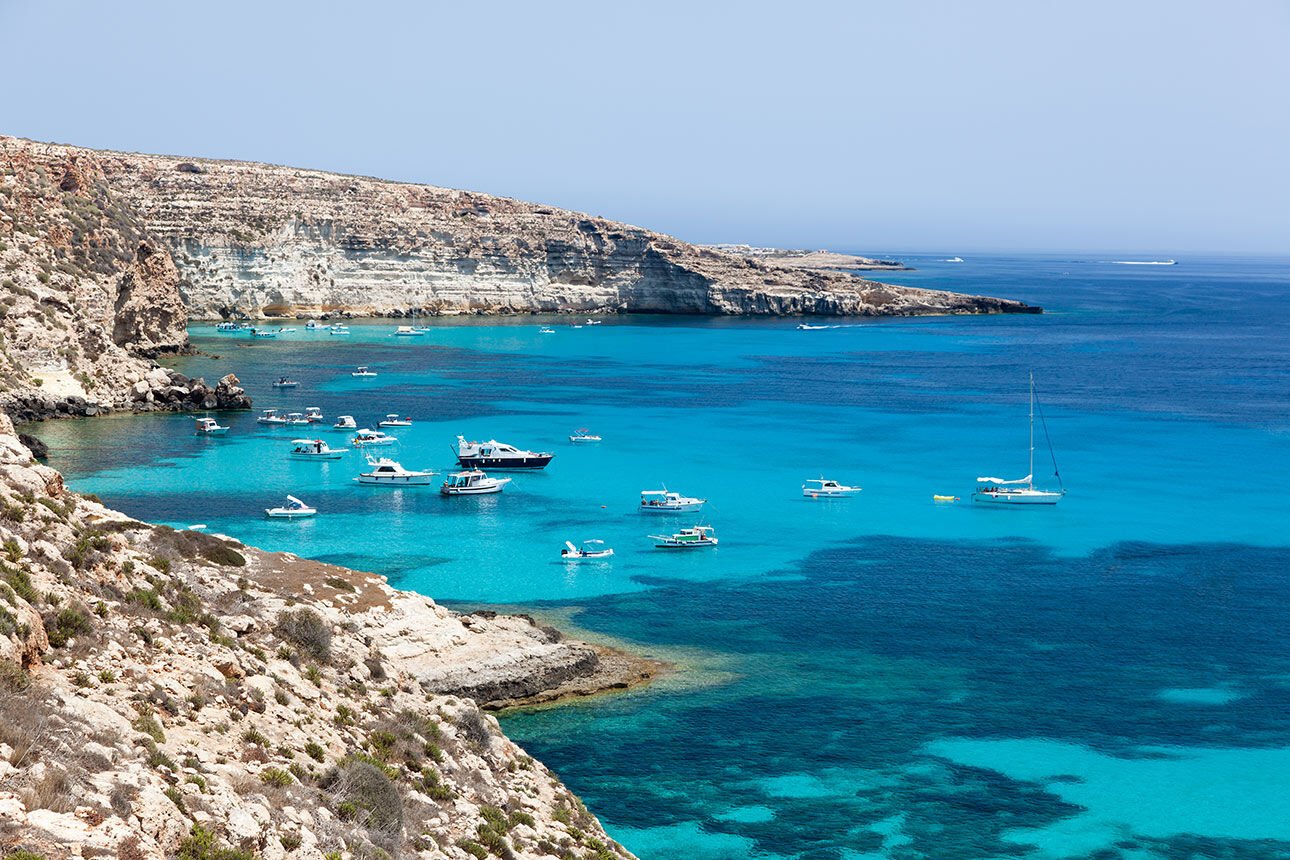
A yacht is associated with a lavish lifestyle of independence and limitless adventure. The vast ocean tempts with the allure of exciting destinations and matchless experiences. Europe is a destination that yacht owners can’t miss. Let’s look at Europe’s most famous yacht travel spots.
The Allure of European Waters
Europe’s coastline is a treasure trove of stunning vistas, rich history, and diverse cultures. Let’s explore top European yacht destinations, from the turquoise Mediterranean to rugged North Sea beauty.
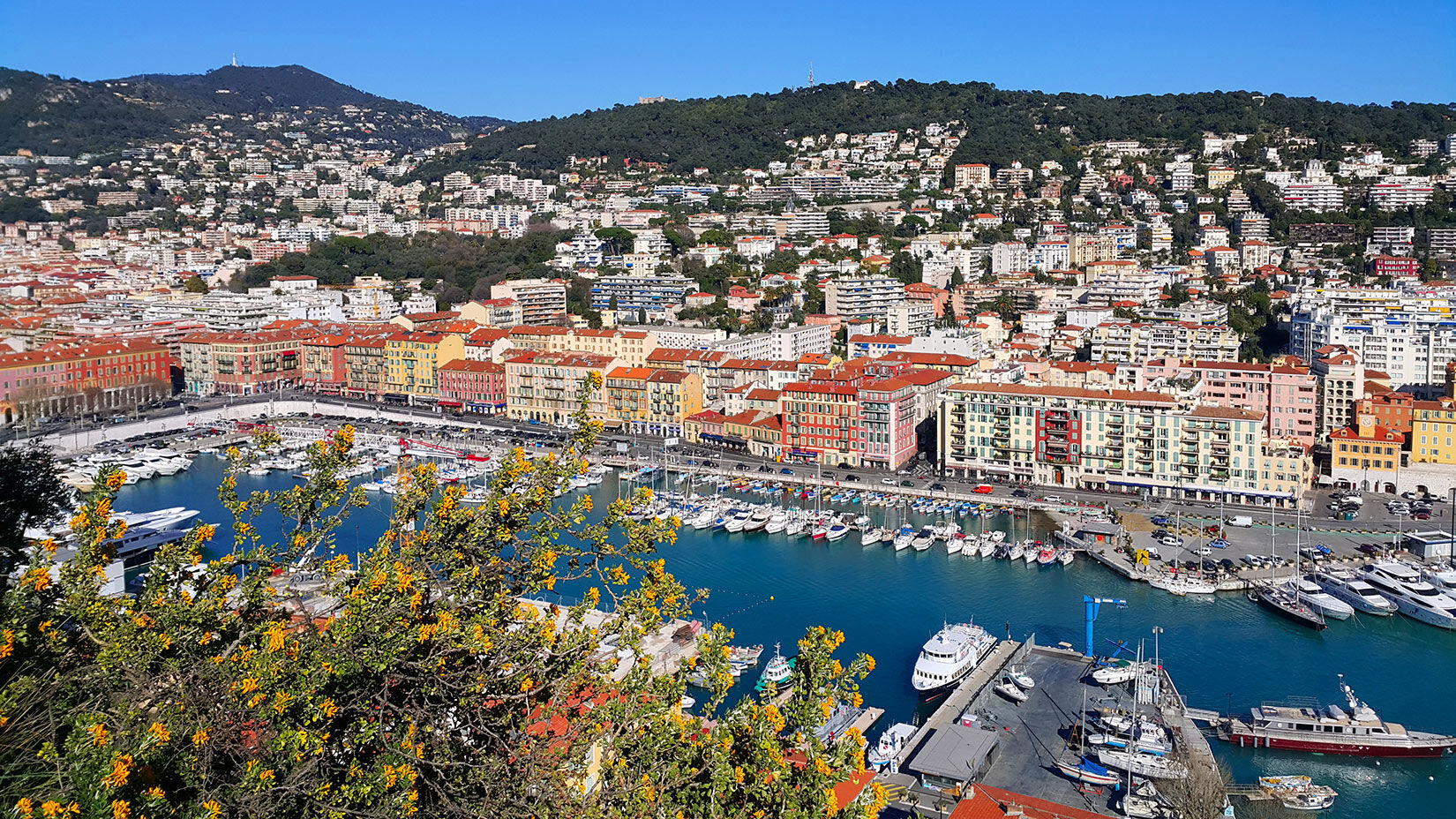
1. French Riviera, France: Known for its glamour and sophistication, the French Riviera is a prime destination for yacht owners. Monaco, Cannes, and Saint Tropez are hotspots where you can rub shoulders with the world’s elite. The French Riviera is full of luxurious yachts that line the harbor and the chic boutiques and cafes that line the streets. The best time to visit the French Riviera is in the summer when the weather is warm and sunny, but if you want to avoid crowds, try May or September.
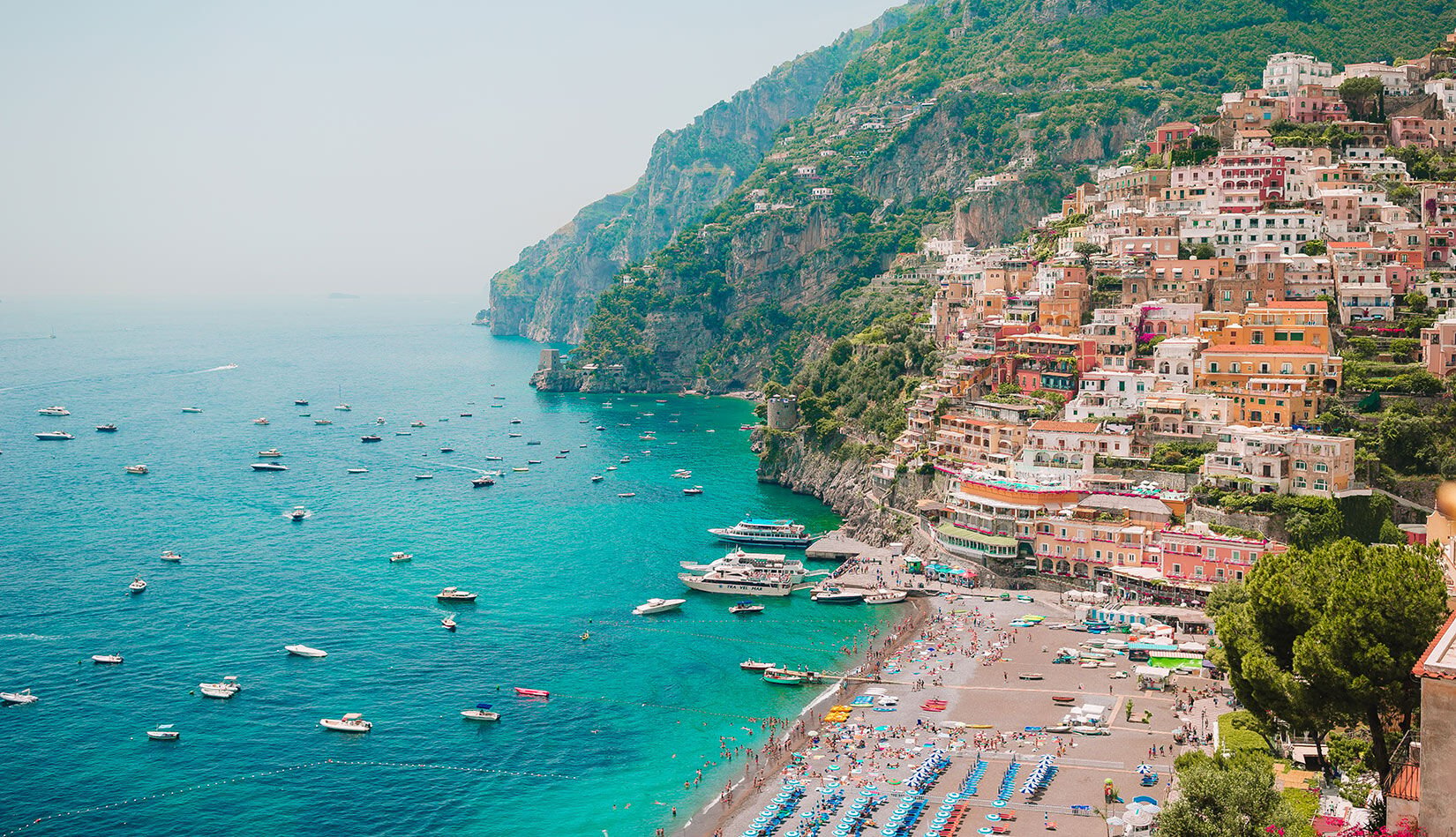
2. Amalfi Coast, Italy: This UNESCO World Heritage site is famous for its dramatic cliffs, crystal clear waters, and charming coastal towns. The best time to visit the Amalfi Coast would be during the summer months when it’s warm and sunny. Try staying in May or September to avoid the crowds. Yacht owners will love the chance to anchor in secluded coves and bays while enjoying the beautiful views of the Mediterranean Sea.
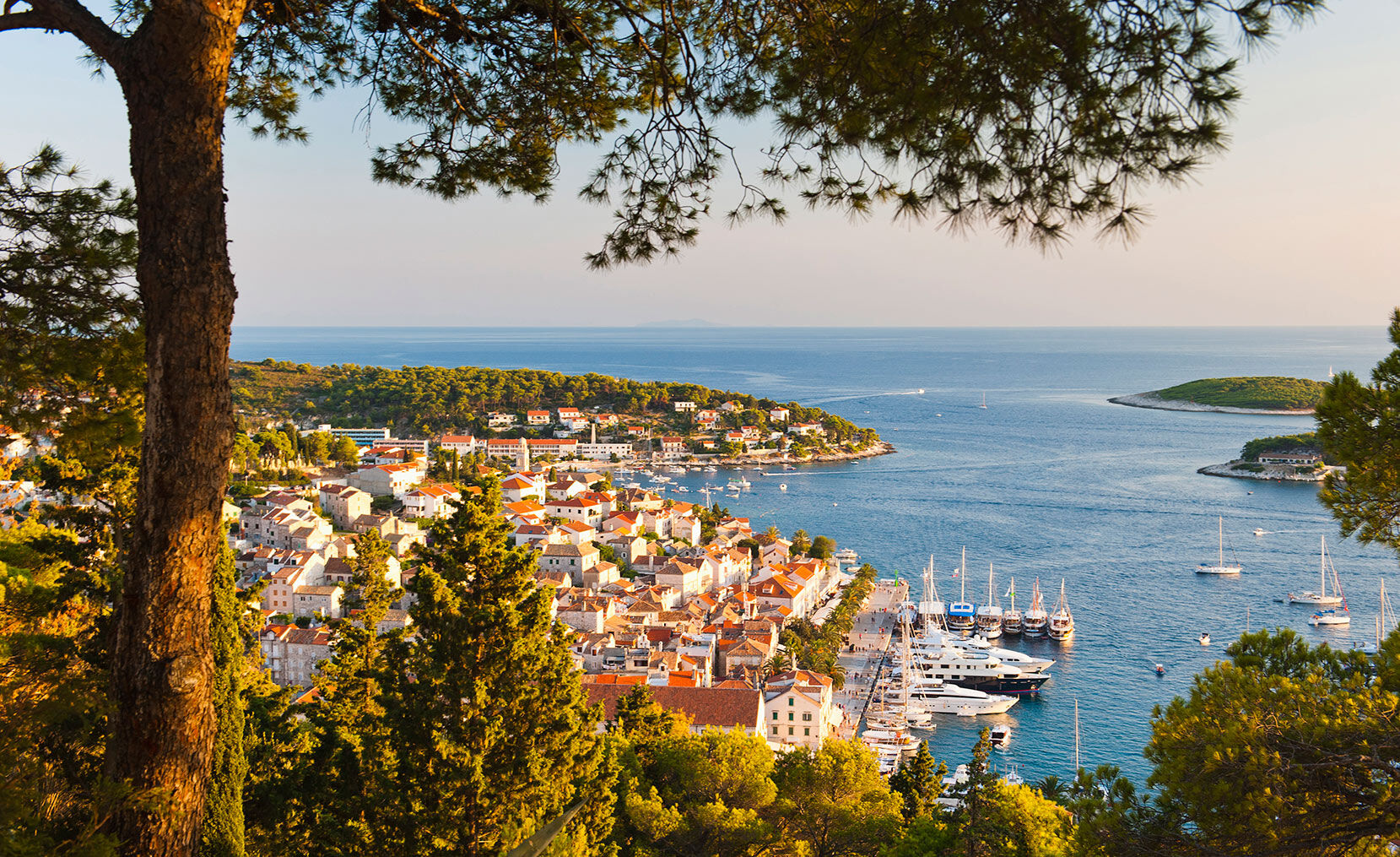
3. Island of Hvar, Croatia: With its medieval architecture, vibrant nightlife, and beautiful beaches, Hvar is a gem in the Adriatic Sea. The island of Hvar is a stunning destination that yacht owners should consider visiting. As with the previous destination, summer is the best time to visit, but if you want to avoid the crowds, try the shoulder months.

4. Balearic Islands, Spain: Mallorca, Ibiza, and Menorca offer a mix of tranquil coves, stunning beaches, and lively parties. The Balearic Islands are busiest in July and August, but the weather is still warm and sunny in May and June, making it a great time to visit without the crowds.
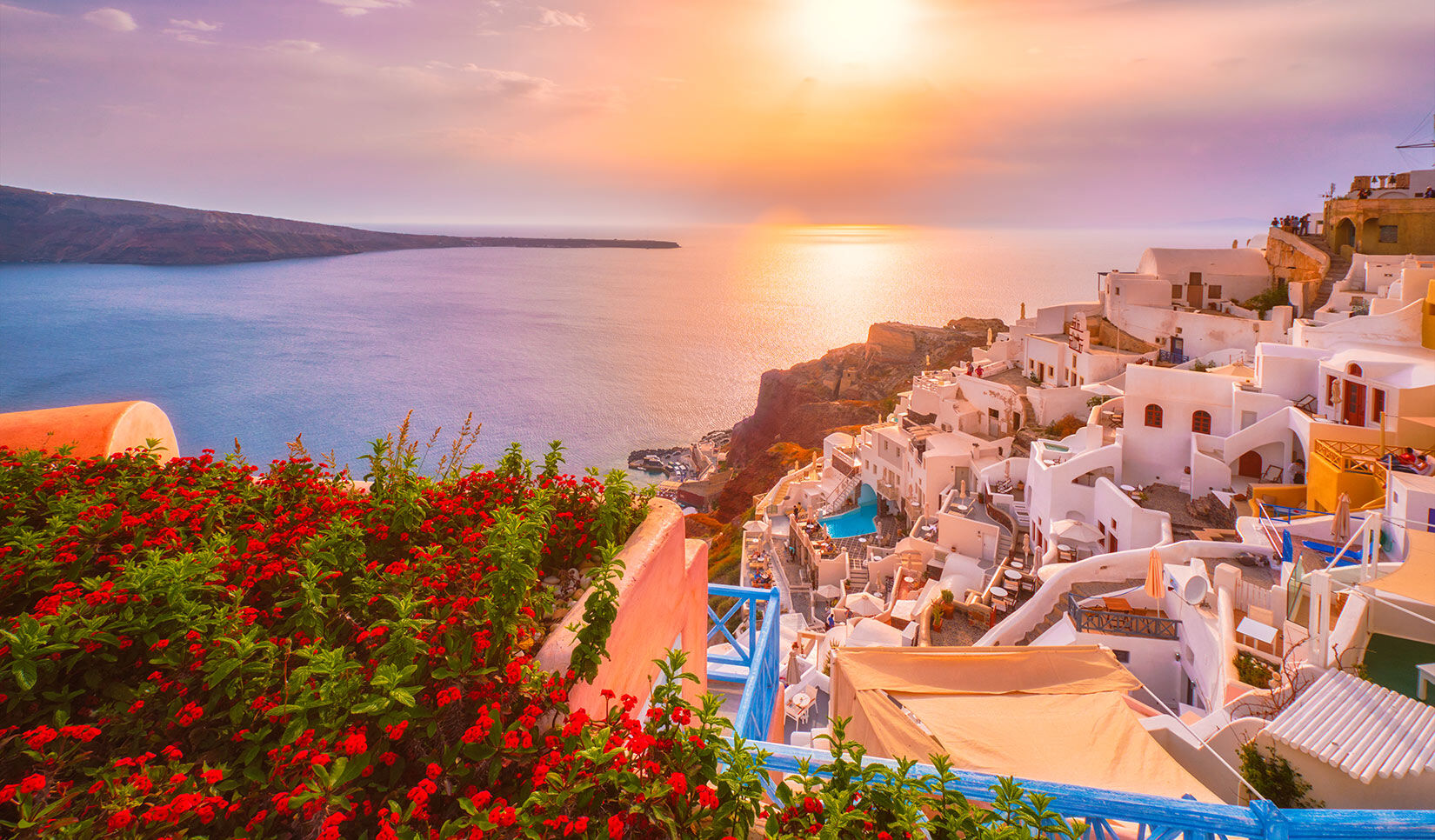
5. Aegean Sea, Greece: The Greek Islands, including Santorini and Mykonos, are a paradise for history buffs, food lovers, and sun-worshipers alike. When planning a yacht trip to the Aegean Sea, the best time to visit would be during the summer, perfect for enjoying the crystal-clear waters and exploring the various islands and ports. Just remember, the summer is also the busiest time of year.
Transporting Your Yacht to Europe
Now that your wanderlust is piqued, let’s discuss how Schumacher Cargo can help you transport your yacht to Europe.
A Legacy of Trust
With over 40 years in the industry, we’ve established ourselves as one of the most trusted international shipping companies. Our dedication to safety, professionalism, and customer satisfaction has made us the go-to choice for yacht owners worldwide.
Comprehensive Services
We offer a suite of comprehensive services for yacht transportation. This includes pick-up, cradle construction, ocean freight, insurance, customs clearance, and delivery to the final destination.
Legalities and Documentation
Navigating through the complexities of international shipping laws and regulations can be daunting. At Schumacher Cargo, our experienced team will handle all the paperwork, ensuring a seamless and stress-free process.
Cost of Transportation
The cost of shipping a yacht across the Atlantic depends on various factors, such as the size of the vessel, the chosen shipping method (Roll-On/Roll-Off or Lift-On/Lift-Off), and the final destination. We provide transparent and competitive pricing with the assurance of no hidden costs.
Set Sail with Schumacher Cargo
Your European adventure awaits, and we’re here to make it happen. At Schumacher Cargo, we understand the value you place on your yacht. We handle every vessel with the utmost care, ensuring it arrives at its destination in pristine condition.
Whether you’re setting sail for the glitz and glamour of the French Riviera, the Greek islands’ historical allure, or the Balearic Islands’ vibrant energy, we’re your trusted partner for transatlantic yacht transportation.
Start your European yachting adventure today with Schumacher Cargo. Your dream destinations are just a sail away! Get a quote for transporting your yacht to Europe.
Closing out the holiday season is New Year’s Eve. The whole world celebrates the ending of the old year and the beginning of the new year together, despite the diverse array of holidays that came just a few weeks earlier. When the clock strikes midnight on December 31, the world celebrates in anticipation of what the new year will bring. Check out some of the interesting New Year’s Eve traditions around the world.
The world doesn’t celebrate all at once because, well, time zones. The first countries to celebrate the new year are Samoa, Tonga, and the small island of Kiritimati (Christmas Island), which is part of Kiribati. The last countries to celebrate the new year are American Samoa and Baker Island, part of the United States. While Samoa and American Samoa are only about 100 miles apart, they are 25 hours apart timewise. When it is 12 p.m. local time in American Samoa, it is 1 p.m. of the next day in Samoa, local time.

How Other Countries Celebrate New Year’s Eve Traditions
Typically in the United States, New Year’s traditions include crowds gathering to watch the famous Times Square Ball drop, whether right in the heart of New York City or on television in the comfort of home. When the clock strikes midnight, couples kiss to ensure another year of love, and communities send fireworks into the sky in celebration.
This holiday is celebrated across the world, so each country has its own customs for ringing in the new year. Check out how these 10 countries celebrate New Year’s Eve.
Spain’s New Year Celebration
The Spanish New Year’s Eve tradition is to eat 12 green grapes at the stroke of midnight. The grapes are eaten at each dong of the bell, one at a time. Las doce uvas de la suerte (“the 12 lucky grapes”) each symbolize the months of the year, and they are supposed to bring good luck.
Denmark’s New Year Celebration
The Danish don’t fret if a plate chips during the year. They save these for New Year’s Eve to then smash against the homes of friends and family to banish bad spirits. When Demark celebrates their New Year you can guarantee it’ll be a smash.
Finland’s New Year Celebration
In this Nordic country, people predict what the upcoming year will look like by casting molten tin into a small container of water. Whatever shape the tin takes when it hardens is what the new year will bring. Shapes resembling a heart or ring mean a wedding, a ship predicts lots of traveling, and a pig means there will be plenty of food available.
Scotland’s New Year Celebration
During the New Year’s Eve celebration of Hogmanay, the Scottish practice “first-footing.” The first person to cross the threshold of a home in the new year is to carry with them a gift for good luck.
Greece‘s New Year Celebration
Traditionally, an onion hangs on the front door of homes on New Year’s Eve as a symbol of rebirth. The next morning on New Year’s Day, parents will wake their children by tapping them on the head with an onion.
Colombia’s New Year Celebration
For those with a never-ending taste for adventure, Colombians will carry an empty suitcase around the block at midnight in hopes of a travel-filled new year. Hopefully the next year, they have a suitcase full of clothes.
Ecuador’s New Year Celebration
In Ecuador, they celebrate the New Year by burning paper-filled scarecrows and and photographs from the last year at midnight. This tradition brings in good fortune by scaring off bad spirits.
Brazil’s New Year Celebration
In Brazil, you need to consider your entire outfit for the evening. Whatever color your underwear is symbolizes what the new year will bring. Popular colors are red (love), yellow (money), green (luck), and white (peace).
Philippines’s New Year Celebration
In the Philippines, it’s not just a random occurrence for the confetti to be in the shape of a circle. Round shapes represent coins, symbolizing prosperity for the next year. People will wear polka dots and eat round fruits at midnight. The Philippines keep their New Year’s traditions round to make the most money they can for the next year.
Japan’s New Year Celebration
In alignment with Buddhist beliefs, the new year is literally rung in through ringing bells in the temples 108 times. This number represents human desires and suffering, and ringing a bell 108 times cleanses oneself.
China’s New Year Celebration
Some countries have a completely different New Years entirely. China’s New Year’s Eve traditions comes during the beginning of the lunar calendar and is a 15 day celebration with many people off the entire time.
Russia’s New Year Celebration
Russia’s New Year Eve tradition is to make a wish in their drinks. To start this tradition, they write their wishes on a piece of paper then light it on fire. Let the ashes fall into their drinks and you consume it with the ashes to make the wishes come true.
Czech Republic’s New Year Celebration
The Czech Republic’s New Year Eve tradition resolves around apples. They’ll all have apples ready to split in half on the New Year, with the shape inside showing what type of future year will happen.
Thinking about cleaning your slate and starting the new year in a new country? Contact the moving specialists today to get a free quote for household goods shipping. From all of us here at Schumacher Cargo Logistics, we wish you a happy new year!
More Reading
















